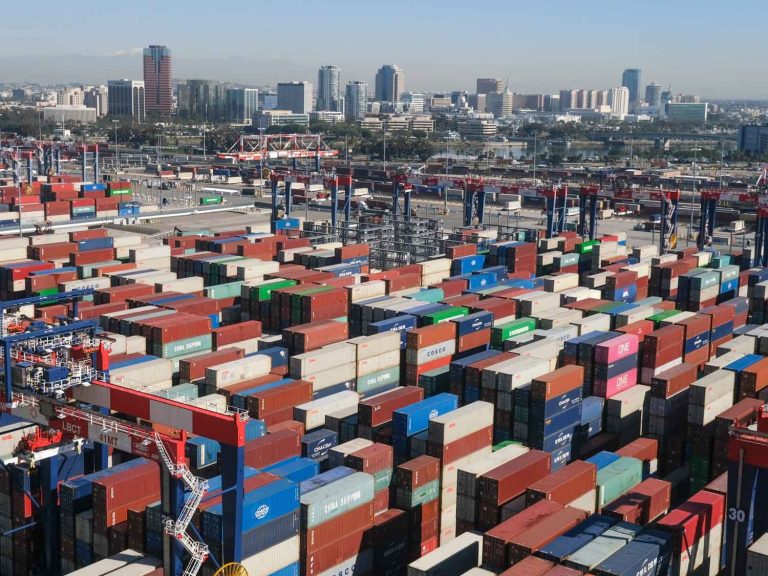
Date:
The transpacific container shipping outlook
Transpacific container shipping lines are imposing surcharges and higher freight rates due to the ongoing Suez and Panama Canal disruptions, with the cost burden felt most by small volume shippers, but the biggest cargo owners are also feeling the heat.
Since the major container shipping lines began diverting vessels around Africa’s Cape of Good Hope in mid-December, spot container rates have, on average, doubled globally.
Shipping lines have told the US government that the longer transit around southern Africa increases the distance a container ship travels from Asia by about 3,300 nautical miles. Resulting in an additional five to 16 days of transit time depending on the destination.
Along with the higher operating expenses of a 40% longer voyage, the lines argue that they need to rewire their entire global network. Which means making schedule changes, adding ships to maintain weekly port calls on a service loop and repositioning containers, all of which point to higher costs for carriers.
The sudden and sharp increase in ocean freight costs came as the market was expecting normalised demand and a surplus of new ships to keep freight rates suppressed during 2024.
Since the unfolding of the Red Sea crisis, and the drought impacting ship transits on the Panama Canal, carriers have levied an array of surcharges, but the surcharges are not being widely applied to BCOs, as they often have protections in their contracts, and mostly carriers are honouring those protections.
But ocean carriers are now looking for ways around those protections. In January, the FMC granted waivers to its 30-day notice period for adding new surcharges, allowing carriers to immediately add the charges due to the urgency of the Red Sea security situation.
A poll of the biggest shippers, beneficial cargo owners (BCOs) found that only 35% of them are having laden containers accepted under their original contract terms, with the vast majority being pushed to FAK [freight-all-kinds] spot market rates, which include added surcharges.
BCOs in the United States believe that ocean carriers have been targeting certain customers for higher rates and surcharges, pushing them towards FAK spot rates that are 400% higher to the US West Coast and 300% higher to the East Coast, for cargo loading in the second half of January.
Many major BCOs with volume commitments above 60,000 FEUs annually are still paying their contracted rates, which suggests an unwillingness by the transPacific shipping lines to upset their largest customers, particularly for gains that may be short-term.
Ocean carriers including Maersk, Hapag-Lloyd and CMA CGM are also using emergency clauses to say they cannot fulfil existing contracts under current terms, requiring shippers to pay surcharges to move their freight.
While ocean freight rates are nowhere near the highs experienced during the pandemic, increases are not just being applied to directly impacted cargo, but also to other routes, because of equipment availability, with shippers often subject to “emergency operational surcharges” on various trade lanes due to the Red Sea crisis.
The impact of Suez-related surcharges and rate hikes on shippers will be the focus of a Federal Maritime Commission hearing this week, to ensure the new fees and surcharges actually cover real costs and are not intended for profit.
We negotiate long-term and protected contracts with shipping lines across the alliances to secure space and rates, so that we can provide the best alternatives and options, whatever the situation.
To learn how we can support transpacific trade, or to learn more about our ocean and air solutions, please EMAILour Chief Commercial Officer, Andy Smith.
